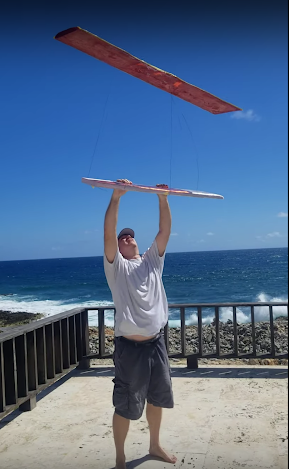Theoretical power for flight
I want to look at the potential energy a glider loses in still air as a way to think about the power needed to power level flight. Imagine we make a glider and add weight so it has our total expected airplane mass. Then we can measure the speed and glide slope and estimate how much power it will need for powered flight. The potential energy is m*g*h. Mass times gravity times height. power = energy/time For a glider the interesting information is: m = mass of the glider v = velocity = airspeed l/d = lift divided by drag = glide ratio = forward distance / down distance GlideRatio = AirSpeed/SinkRate g = 9.8 meters/second^2 SinkRate = v / GlideRatio = how fast glider is loosing altitude TheoreticalPower = m*g * SinkRate watt = joule/second = 1 Kg * meter^2 / second^3 ...
